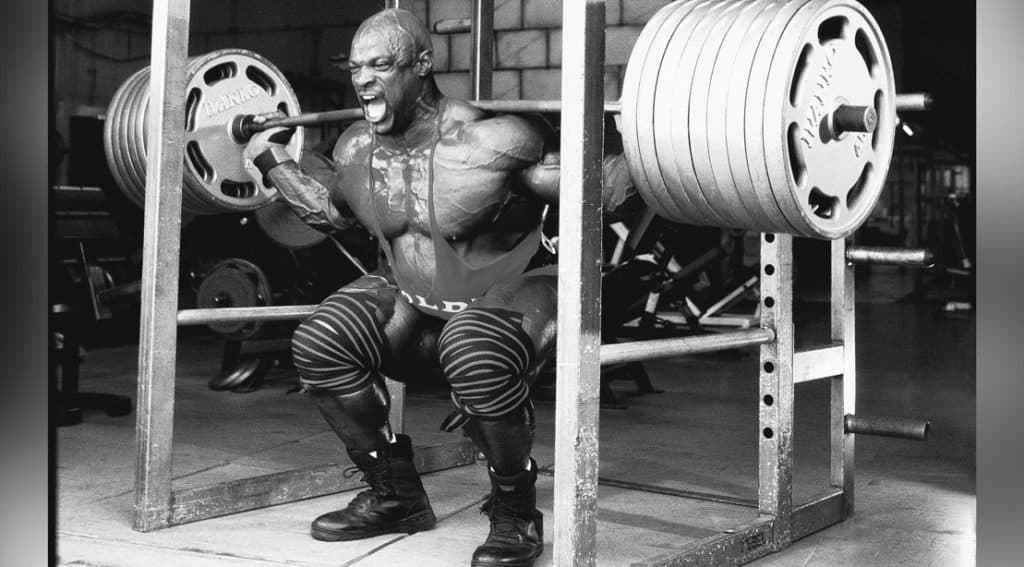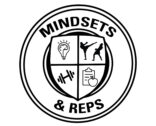
Lee Haney, a former 8 time Mr. Olympia winner, once famously said “stimulate don’t annihilate” when talking about building muscle. What he claims is that you don’t have to lift super heavy to build muscle, you just have to stimulate the muscle enough to elicit growth. As one of the best bodybuilders of all time, it’s hard not to take his word for it.
But then you have Ronnie Coleman, another 8 time Mr. Olympia winner, who is known for lifting massively heavy loads in the gym. His training videos leading up to competitions are legendary, showcasing 800lb squats and deadlifts for reps. Given his success, it’s hard not to look at Ronnie and think that lifting heavy is the way to go.
So who’s correct in this equation? The primary driver of muscle growth is mechanical tension, which means using a muscle to generate force. This can be achieved by exercising with good form, full range of motion, and adequate weight. These three in conjunction lead to a proper muscle contraction and muscle growth over time.
But is lifting heavy necessary to build muscle? While it’s not necessarily required, heavy lifting does have a unique ability to recruit and stimulate more muscle fibers than lifting lighter loads.
Two Biggest Factors in Building Muscle
Mechanical tension and workout volume are the two biggest variables for hypertrophy (building muscle). Mechanical tension has already been defined as putting the muscle under a sufficient load and generating force. Simply put, lifting heavier loads is the easiest way to add tension to the muscle. Lifting loads of about 80-85% of your 1RM (one rep max) can stimulate and recruit more muscle fibers, particularly larger fast twitch muscle fibers.
Workout volume can be defined in two ways.
The mathematical definition of workout or training volume is reps multiplied by sets multiplied by weight lifted. The drawback of this formula is that it doesn’t take minimal threshold into the equation. I could walk around all day and do bicep curls with a 3lb dumbbell and not build much muscle because the load isn’t great enough. It’s technically a high volume workout, but would not lead to much growth in the long run.
An easy way to track training volume is by counting the number of working sets per workout per muscle group. A working set is anything that isn’t a warmup set, so already we’ve established a minimal threshold. While on the surface it seems less precise (since you’re not doing any math), simply counting the total number of working sets is often a better gauge of true training volume.
What is Considered Heavy Lifting
Heavy is a relative term. What is heavy for you may not be heavy for me and vice versa. Remember that the goal is to build muscle, so we need adequate mechanical tension. Part of mechanical tension is time under tension, which is how long your muscles are under a given stress. A powerlifting routine would not build maximum amounts of muscle because the time under tension is too short. It would build some, but it’s not optimal. A 1RM squat is very challenging, but you are only under the bar for a few seconds. Compare this to a ten rep squat, which may take 30 seconds to complete.
To get the most out of our heavy lifts, we need a balance between heavy weight and time under tension. Sets of 4-8 reps are the sweet spot to achieve both. Earlier we mentioned that loads of 80-85% 1RM can recruit more muscle fibers. 80-85% 1RM translates to a set of about 5 or 6 reps. It is up to you to determine a proper weight to implement for these lifts. If it’s too easy, you’ll be leaving muscle gains on the table.
How to Add Heavy Lifting to Your Program
Heavy lifting should be a part of your training, but not necessarily the basis. The best physiques are balanced, and have no weaknesses. This requires giving proper attention to many different muscle groups. So we can’t just bench and squat heavy and expect to develop the body we want.
It is important to consider the risk-reward ratio when determining how to implement heavy lifting into a muscle building routine. For certain muscle groups and exercises, it doesn’t make sense to go heavy. Swinging dumbbells like a madman for front shoulder raises will do more harm than good. Throwing your entire body into a tricep cable pushdown like your operating a jackhammer is the same. So exercise selection is important.
Use your best judgment when determining what exercises you want to go heavy on. An easy rule of thumb is to go heavy on free weight, compound movements. For example, it’s better to go heavy on a barbell squat than it is a leg extension machine. The barbell squat engages multiple muscle groups and can be adjusted based on your body type. The leg extension only engages the quadriceps muscles, and is on a fixed plane.
You can go heavy on isolation movements based on comfort level. Through experience and experimentation you will discover what works for you. For example, I have no problem going heavy on bicep curls, but skull crushers lead to elbow discomfort if I go too heavy.
In terms of programming, there are two basic ways to add heavy lifting. The one most people are familiar with is progressive overload. You do a set of 10, then 8, then 6, then 5 or less and so on. Each time the weight gets progressively heavier. This is a perfectly fine way to implement heavy lifting into a program.
Another way is to dedicate an entire workout to heavy lifting. Remember that heavy in our case is only 4-8 reps per set. You can max out once in awhile, but it is not advisable to do so too often. As mentioned earlier, powerlifting routines fall short for muscle growth because of a lack of time under tension. In addition, maxing out is very fatiguing and will affect the remainder of the workout. So not only are you not optimizing for muscle growth, you are taking away from the rest of the workout.
High frequency training is an easy way to add “heavy days” to your routine. High frequency training involves training muscle groups multiple times per week. This is the opposite of split training, which is a routine that has a chest day, leg day, etc. once per week. In a high frequency training model you would dedicate an entire workout to heavy training (4-8 reps) and another day to a more typical rep range for hypertrophy (10-12 reps).
There is another type of periodization called block training, where you stick with one rep range for a period of time (typically about a month) before switching to a different one. This is the least effective type of periodization. It’s better than winging it to a certain degree, but still not very good.
Say for example month one was focused on heavy lifting, which we’ve defined for our purpose as 4-8 reps. Then month two is hypertrophy training of 10-12 reps. By the time you’re in the middle of month two, you’ve already lost some of the adaptations from month one. You’ve completely forgone the heavy lifting, and thus lost the beneficial gains from that first month. For this reason, it’s better to stick to an undulating style of periodization, switching the reps on a workout by workout or even a week by week basis.
